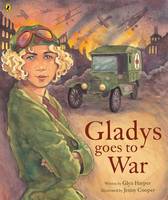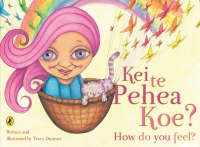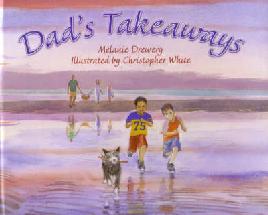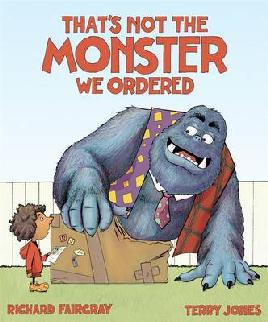He kitenga kanohi, he hokinga mahara, he koanga ngākau. Seeing a familiar face brings with it happy memories.
Do you remember being torn over which colours to use when you were colouring in people as a kid? Light pink, brown, black, white or beige. If later in life we become illustrators, it’s important to remember to use a variety of skin tones so that more of our tamariki see themselves reflected back in the books their teachers or aunties might choose for them. Because seeing a familiar face brings with it happy memories.
In 20 years of award-winning picture books, non-white people made up just 12% of main characters.
Sadly, as the above statement from it suggests, a recent Australian study shows a real lack of diversity among the human main characters in 118 award-winning picture books from the past 20 years. Curious to see whether the same applied here in Aotearoa we started browsing lists of New Zealand Book Awards finalists’. It’s important to note here that it would be utterly senseless to make any kind of comparison between Aotearoa and Australia in a bicultural space, we are two different nations at two different points in our bicultural journeys. But just how diverse are our illustrators’ palettes this side of the ditch?
Diversity in New Zealand picture books
Unfortunately our popular New Zealand Book Awards for Children and Young Adults site only lists the finalists from the past two years and the winners from the years previous which, with only 27 titles, didn’t provide us with quite enough data. The Storylines Children's Literature Foundation of New Zealand Notable Books List offered 202 shortlisted titles from the picture book category over the past 20 years which is relatively close to the parameters of the Australian study that initially sparked our interest. After we removed the 49 titles that featured animals, monsters and the like as main characters we had 153 picture books left to check out.
The Australian study examined quite a few variables including gender and diversity amongst the illustrators and authors. Here we have focussed more on the diversity of the main characters' skin tones. Rather than making judgements as to the main characters ethnicity based on their skin colour instead we looked at the colours used to illustrate the main characters as light skinned or dark skinned.
Given our bicultural heritage here in New Zealand we included a Māori category where, irrespective of the characters’ skin tone, if the book had a Te Ao Māori focus or used Māori language the book was placed into a “Māori” category. Where the artist used light pink, beige or white they fell into the “light skinned” category, where the artist used a light brown or darker shade they were placed into a “diverse” category.
 We tried to remain quite open-minded about what type of picture book might fall into a “diverse” category. For instance, one of our “diverse” picture books was Gladys goes to War, the true story of Gladys Sandford - mechanic, First World War ambulance driver, New Zealand's first woman pilot. Another story was all about the bond between mums and their babies, but it was the dad going through the bed time routines with his daughter. This deviation from the more typical “nuclear family” structure prompted us to consider this book as a “diverse” entry. It is important for our tamariki to see all types of family structures reflected back at them in the books they are exposed to throughout their childhood as well.
We tried to remain quite open-minded about what type of picture book might fall into a “diverse” category. For instance, one of our “diverse” picture books was Gladys goes to War, the true story of Gladys Sandford - mechanic, First World War ambulance driver, New Zealand's first woman pilot. Another story was all about the bond between mums and their babies, but it was the dad going through the bed time routines with his daughter. This deviation from the more typical “nuclear family” structure prompted us to consider this book as a “diverse” entry. It is important for our tamariki to see all types of family structures reflected back at them in the books they are exposed to throughout their childhood as well.
We did see some of the diverse population here in Aotearoa reflected in our picture books but this could definitely still be improved.
In our award winning picture books from the past 20 years 65% of the main characters were illustrated with light skin, 14% of the books fell into the diverse category and 21% Māori. Interestingly, these percentages more or less align with statistics from the 2018 Census where 70.2% of our population identified with the European ethnic group and 18.5% identified themselves as of Māori descent.

Books in Te Reo Māori
 In 2016 a LIANZA Te Kura Pounamu Māori Language award was integrated into the New Zealand Book Awards. In 2019 Te Reo Māori specific awards also became a feature of the Storylines Children's Literature Foundation of New Zealand Notable Books List. These separate awards are a great way to highlight and promote Māori resources and encourage more publishing in Te Reo Māori. However, since their introduction there have been fewer Te Reo Māori finalists in the general Picture Book categories so we do need to ensure books in Te Reo Māori stay in the running for the more mainstream awards as well.
In 2016 a LIANZA Te Kura Pounamu Māori Language award was integrated into the New Zealand Book Awards. In 2019 Te Reo Māori specific awards also became a feature of the Storylines Children's Literature Foundation of New Zealand Notable Books List. These separate awards are a great way to highlight and promote Māori resources and encourage more publishing in Te Reo Māori. However, since their introduction there have been fewer Te Reo Māori finalists in the general Picture Book categories so we do need to ensure books in Te Reo Māori stay in the running for the more mainstream awards as well.
Award-winning authors and illustrators
 With an impressive 12 entries Gavin Bishop features prominently as both an author and illustrator. Joy Cowley and Pamela Allen have also picked up over a dozen nominations each across the 20 years of finalists. Our award winning picture books include many other well-known names like Witi Ihimaera, Melanie Drewery, Lynley Dodd, Margaret Mahy and Kāterina Te Heikoko Mataira. Donovan Bixley is another name to watch - his amazingly illustrated picture books in Te Reo Māori are favourites at our Ngā Pakiwaitara – Bilingual Storytimes.
With an impressive 12 entries Gavin Bishop features prominently as both an author and illustrator. Joy Cowley and Pamela Allen have also picked up over a dozen nominations each across the 20 years of finalists. Our award winning picture books include many other well-known names like Witi Ihimaera, Melanie Drewery, Lynley Dodd, Margaret Mahy and Kāterina Te Heikoko Mataira. Donovan Bixley is another name to watch - his amazingly illustrated picture books in Te Reo Māori are favourites at our Ngā Pakiwaitara – Bilingual Storytimes.
It’s inspiring to see developments taking place in this space. The Children’s Ngā Pounamu Māori collection is one of the most issued collections here at Tūranga so we think this is a really exciting space to watch. We have so many ethnicities that make up our population here in Aotearoa so it would be great to see more diversity in our popular picture books. Especially because something as simple as a picture book can provide a safe space to discuss prejudices, stereotypes and social injustices. Nida Fiazi offers a great write-up on difficulties finding New Zealand picture books that represent diversity in her post Ethnic Representation in Picture Books.
In sum, while we were pleasantly surprised to see quite a variety of Māori titles in our award winning picture books, there is definitely still room for improvement. Which skin tone colours do you use when you’re colouring in? How many picture books do you see familiar faces in?
More reading
- Books for children with diverse characters
- Books for children with Māori characters
- In 20 years of award-winning picture books, non-white people made up just 12% of main characters (Australian study)
- Ethnic Representation in Picture Books Nida Fiazi (The Sapling)
- Our page listing children's literary prizes and awards




Add a comment to: He kitenga kanohi, he hokinga mahara, he koanga ngākau